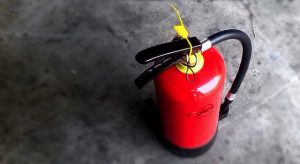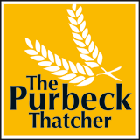The best form of fire protection is fire prevention, thatch will not self combust it needs a ignition source so there are many things you can do yourself to protect your property from fire like make sure your chimney is cleaned at least twice a year and in a good state of repair and even better lined and always use good dry seasoned logs a good professional chimney sweep can advice you on all of this and more. You should have a fire alarm in the loft space and have a fire extinguisher close by. Up lighters in the ceiling should  have guards on them and insulation should be kept away from them. Any electric wiring in loft space should be rodent proof. Also, always have a good hose outside to hand, all of this will massively lower the risk of fire.
have guards on them and insulation should be kept away from them. Any electric wiring in loft space should be rodent proof. Also, always have a good hose outside to hand, all of this will massively lower the risk of fire.
Other Points to Consider
Electrical Cables
Where the supply cables for electricity are above the ceiling joists and under the rafters in the loft they should comply with BS 6207 Part 1 ‘Wiring system using Mineral Insulated Cables’ or, alternatively, BS 31 or BS 4568 Parts 1 and 2 ‘Wiring System using PVC Insulated Cables enclosed in Conduit’.
If the thatched roof is covered with protective wire netting, this must come within 12″ (300mm) of an electrical cable unless adequate insualtion is provided.
Electrical Fittings
Electric light fittings in the roof space should be enclosed in a bulkhead or well-glass fitting.
Television Aerials
Television aerial leads should not pass over or under the thatch. Aerials should be fitted to a freestanding pole at least 20′ (7metres) from the roof. Where this is not possible, aerials can be fixed to a gable end chimney and the lead taken down the wall, avoiding any contact with the thatch.
Draughts
Close all gaps from inside the loft, at eaves, wall plate, gable ends and chimneys with a cement/lime/sand fillet mix in proportion of one of cement, two of lime and four of sand by volume. Make the trapdoor to the loft as airtight as possible.
Open Fires and Chimneys
The height of the chimney should conform to local council recommendations and be fitted with a spark arrester suitable for the type of fuel used.
Avoid fuels which emit sparks and those which produce a lot of soot. Have the chimney swept regularly, espeically if burning wood in a coal burning grate. Chimney breasts and flues should conform to the Building Regulations, particularly with regard to the proximity of combustable or conducting materials. As a general principle these materials should not be within 2″ (50mm) of a chimney breast. In the case of flue pipes the distances are much greater and expert advice should be sought.
Storage
Do not sure combustable materials in the roof space.
Smoking
No naked lights or smoking should be permitted within the roof space.
